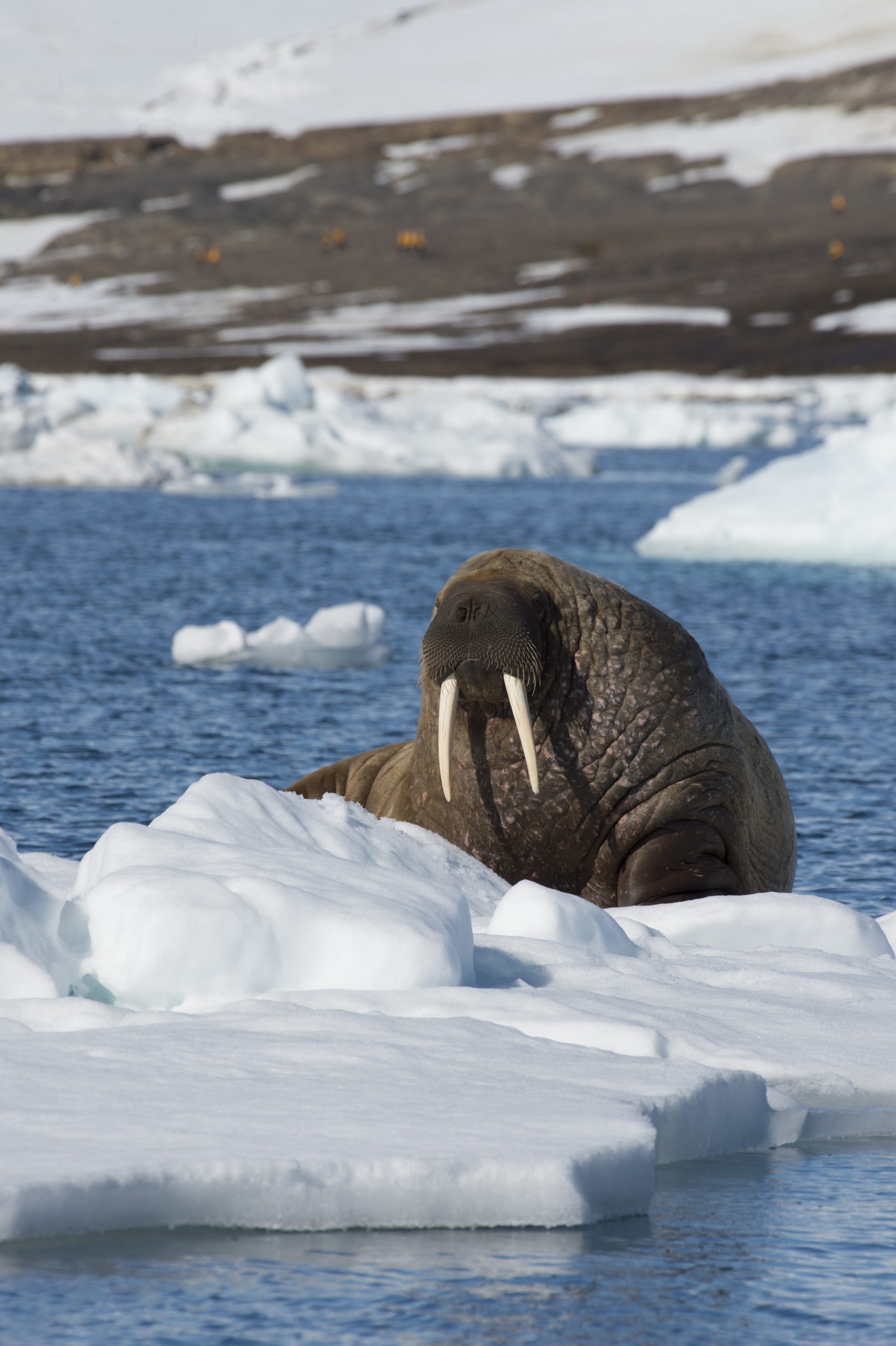Climate changes and increasing geopolitical attention have put Arctic destinations on the mental map—and bucket lists—of travellers around the globe. For this reason, the past decade has seen intense tourism development in many Arctic destinations in the Nordic countries, North America and Russia. While COVID-19 largely brought global tourism to a halt for more than two years, Arctic tourism is expected regain—and even surpass—its visitor numbers in the years to come.
Increasing tourism has not only offered new economic opportunities to Arctic communities seeking to diversify and grow their economies but also created a range of serious challenges for local and Indigenous communities and their environments. These include claims of overtourism, cultural appropriation and local economic exclusion, increasing waste and pollution and growing pressure on and degradation of sensitive Arctic ecosystems.
Towards more sustainable Arctic cruise tourism?
In the marine and coastal areas of the Arctic, cruise tourism is often targeted as a major culprit behind many, if not all, of these negative impacts. When huge ships call into often very small ports, locals may feel flooded by a tidal wave of tourists who often leave little more behind than trash, unsolicited attention and exhaustion. Understandably, such examples leave communities and decision-makers questioning whether tourism is really a desirable and sustainable avenue for supporting Arctic livelihoods.
Yet other directions for more socially, culturally and environmentally sensitive and responsible Arctic tourism exist that better respect small communities as well as sensitive on-land and marine environments. Expedition cruise operators present themselves as offering a more sensitive sort of tourism. Not only do their cruises operate on a much smaller scale than usual cruise tourism ships; they also follow a business model and philosophy that allow more room for value creation in the ports of call, for example, by facilitating local, as opposed to ship-based, guided tours and experiences and by serving or giving passengers access to local foods. And they comply with tighter environmental regulations.
Many Arctic expedition companies are members of the Association of Arctic Expedition Cruise Operators (AECO), whose objectives are to ensure that cruise tourism in the Arctic respects the natural environment, local cultures, as well as challenging safety hazards at sea and on land. Based on the Norwegian Artic archipelago of Svalbard, the organisation was set up to represent the interests of the cruise industry and to minimise negative impacts[1], working on behalf of and with members to bridge and facilitate dialogue among the industry, local communities, scientists and policymakers.
The association has played an important role in developing regulations governing the use of heavy fuels and in drafting other environmental protection guidelines. It also has collaborated with many research and citizen science projects to increase knowledge and raise awareness on topics such as noise pollution, search and rescue and responsible tourist behaviour. AECO members follow guidelines developed for expedition cruise operations in the Arctic, including more than 20 site-specific guidelines to help prevent disturbance of wildlife, vegetation and cultural remains during landings.
To supplement its visitor guidelines, in 2018 AECO also initiated the development of community specific guidelines as a tourism management tool enabling cruise ships to be more socially responsible[2]. The guidelines, developed by community stakeholders, offer operators and tourists detailed instructions on how to make considerate visits to settlements. Community guidelines are currently available for destinations in Greenland, Iceland, Svalbard and Canada. Communities can find inspiration in the template available on the AECO website.
The guidelines are examples of how close collaboration and partnership among ports of call, community representatives, tourism businesses and organisations such as AECO can help make coastal and marine tourism more socially acceptable and economically sustainable for local businesses. This also offers a better experience for tourists coming to the Arctic, who are becoming increasingly aware of the need to reduce their tourism footprint.
The integration of local business is illustrated also by the Norwegian cruise line Hurtigruten’s Coastal Kitchen food concept, which ensures that over 80 percent of the ingredients in the onboard restaurants are locally sourced from more than 50 Norwegian suppliers and delivered to the ships at 15 of the 34 ports Hurtigruten visits. Local food sourcing is an example of how external and local tourism businesses can create mutual benefits and improve product quality while increasing local sustainability and value.
In an industry that has received much criticism for its unsustainable practices, the above examples around Arctic cruise tourism show how sustainability and local value creation increases through collaboration, knowledge exchange and dialogue among industry, local businesses and communities. This demonstrates how the Arctic cruise tourism experience can and should be improved in the years to come. This will require that tourism value chains be increasingly anchored to the local stakeholders of Arctic tourist destinations. One of the prerequisites for this is ensuring local engagement, ownership and co-design of tourism development strategies, enabling local stakeholders to contribute to as many aspects of tourism development as possible. This includes the planning, telling and selling of the Arctic, its places and its people.
Nothing about us without us
Following the credo ‘nothing about us without us’, a good example of collaborative learning is the EU-funded Culturally Sensitive Tourism in the Arctic (ARCTISEN). The four-year project worked to develop and market products and experiences in Arctic tourism based on local and Indigenous culture and knowledge. While the core of the product was anchored in local and Indigenous culture, the tools to share the stories and build capacity were cutting-edge. Through digital platforms, during benchmark trips and through online courses, destination managers and small business entrepreneurs across the Arctic came together to learn, discuss and innovate their products and marketing in ways that sensitise all aspects of tourism so that it may become a powerful tool in place development.
ARCTISEN displays the need for and value of a sustained focus on networks that are able to build capacity and share knowledge within and across often-small destinations. While the ARCTISEN project recently concluded, it lives on in the one-year project Ethical Tourism Recovery in Arctic Communities and in the created products, in the growing awareness of the need for cultural sensitivity in Arctic tourism and in new knowledge networks across the Arctic.
While Arctic coastal destinations differ in many respects, they also have much to learn from and exchange with each other regarding more sustainable and responsible tourism development. For this reason, alliances are needed across Arctic destinations to deliberate about and improve tourism governance and planning, destination management, training and education, and product innovation—to mention just a few areas.
—–
[1] L. Bets, M.A.J. Lamers and J.P.M. Van Tatenhove, ”Collective Self-Governance in a Marine Community: Expedition Cruise Tourism at Svalbard,” Journal of Sustainable Tourism 25, no. 11 (2017): 1583–99, doi:10.1080/09669582.2017.1291653.
[2] Association of Artic Expedition Cruise Operators, ”Community Guidelines,” https://www.aeco.no/guidelines/community-guidelines/.






